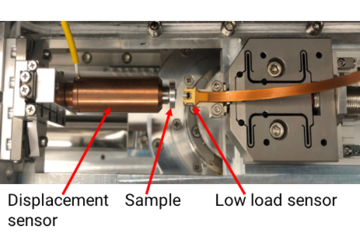All genres
241.
Journal Article
Ab Initio-Based Prediction of Phase Diagrams: Application to Magnetic Shape Memory Alloys. Advanced Engineering Materials 14 (8), pp. 547 - 561 (2012)
242.
Journal Article
A flexible, plane-wave based multiband k . p model. Optical and Quantum Electronics 44 (3-5), pp. 183 - 188 (2012)
243.
Journal Article
Ab initio EPR parameters for dangling-bond defect complexes in silicon: Effect of Jahn-Teller distortion. Physical Review B 85 (19), 195202, pp. 1 - 8 (2012)
244.
Journal Article
Solution enthalpy of hydrogen in fourth row elements: Systematic trends derived from first principles. Physical Review B 85 (15), pp. 155144-1 - 155144-10 (2012)
245.
Journal Article
Vacancy formation energies in fcc metals: Influence of exchange-correlation functionals and correction schemes. Physical Review B 85 (14), 144118 (2012)
246.
Journal Article
The relation between ductility and stacking fault energies in Mg and Mg–Y alloys. Acta Materialia 60 (6-7), pp. 3011 - 3021 (2012)
247.
Journal Article
Combined ab initio, experimental, and CALPHAD approach for an improved thermodynamic evaluation of the Mg–Si system. Calphad: Computer Coupling of Phase Diagrams and Thermochemistry 37, pp. 77 - 86 (2012)
248.
Journal Article
Strong dipole coupling in nonpolar nitride quantum dots due to Coulomb effects. Applied Physics Letters 100, pp. 092103-1 - 092103-4 (2012)
249.
Journal Article
Atomic forces at finite magnetic temperatures: Phonons in paramagnetic iron. Physical Review B 85, pp. 125104-1 - 125104-5 (2012)
250.
Journal Article
Trends in the elastic response of binary early transition metal nitrides. Physical Review B 85, pp. 064101-1 - 064101-9 (2012)
251.
Journal Article
First-principles study of the thermodynamic and elastic properties of eutectic Fe–Ti alloy. Acta Materialia 60 (4), pp. 1594 - 1602 (2012)
252.
Journal Article
Advancing density functional theory to finite temperatures: Methods and applications in steel design. Journal of Physics: Condensed Matter 24, 053202 (2012)
253.
Journal Article
Ab initio study of pressure stabilized NiTi allotropes: Pressure-induced transformations and hysteresis loops. Physical Review B 84, pp. 224119-1 - 224119-8 (2011)
254.
Journal Article
Temperature-driven phase transitions from first principles including all relevant excitations: The fcc-to-bcc transition in Ca. Physical Review B 84 (21), pp. 214107-1 - 214107-20 (2011)
255.
Journal Article
Combined multifrequency EPR and DFT study of dangling bonds in a-Si:H. Physical Review B 84, 245203, pp. 1 - 10 (2011)
256.
Journal Article
Designing shape-memory Heusler alloys from first-principles. Applied Physics Letters 99, pp. 191904-1 - 191904-3 (2011)
257.
Journal Article
First-principles study on the interaction of H interstitials with grain boundaries in alpha- and gamma-Fe. Physical Review B 84 (14), pp. 144121-1 - 144121-13 (2011)
258.
Journal Article
Methodological challenges in combining quantum-mechanical and continuum approaches for materials science applications. European Physics Journal Plus 126, pp. 101-1 - 101-22 (2011)
259.
Journal Article
Ab initio based determination of thermodynamic properties of cementite including vibronic, magnetic and electronic excitations. Physical Review B 84 (12), 125101 (2011)
260.
Journal Article
A density functional theory based estimation of the anharmonic contributions to the free energy of a polypeptide helix. Journal of Chemical Physics 135 (8), pp. 084122-1 - 084122-7 (2011)











